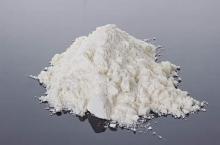ORLANDO – Evidence of illicit drug use in patients prescribed opioids for chronic pain is a red flag that requires clinical action, but immediately discontinuing opioids is not essential, three experts who participated in a panel discussion agreed.
“Never ignore a positive urine, but document fully what course of action you plan to take,” Dr. Howard A. Heit of Georgetown University in Washington said at the meeting, cosponsored by the Journal of Family Practice.
Often, evidence of cocaine, marijuana, or other illicit drugs in the urine is a direct violation of the patient-prescriber agreement signed when opioids are initiated. Such a violation should be considered in the decision to continue opioid treatment, but sudden discontinuation of opioids carries its own set of risks. According to the assembled experts, the next clinical steps should be evaluated in the context of benefits and risks.
Specifically, withdrawal symptoms induced by sudden discontinuation of opioids impose their own health risks and should be minimized, according to the experts. Although recreational use of cocaine, marijuana, and other illicit drugs should be considered a red flag in a patient taking opioids for pain, illicit drug use is common in the general population and might not necessarily confirm a serious pattern of aberrant behavior.
Each situation is different, but a positive cocaine test “would probably make me want to impose more restrictions [on the prescription of opioids] and see the patient more frequently,” said Dr. Douglas L. Gourlay of the departments of anesthesiology and psychiatry at the University of Toronto. He, like the others, said he would discontinue opioids in patients who repeatedly tested positive for illicit drugs, but he noted that the control of chronic pain should not be abandoned as a therapeutic goal even if patients have addiction.
“You have to look at the whole clinical picture,” agreed Dr. Edwin A. Salsitz. “Like it or not, a lot of people think that smoking marijuana occasionally is not a big deal, so I think it is important to consider the whole case. Are they otherwise moving ahead in terms of job, family, etcetera,” asked Dr. Salsitz of the department of psychiatry at the Icahn School of Medicine at Mount Sinai in New York.
The answer to this question could be no, in which case illicit drug use should be considered an indicator of risk for opioid abuse. In these patients, opioids should be weaned rapidly, according to Dr. Heit, but he said that in these situations, “I am going to fire the molecule and not the patient.” He acknowledged that some patients may, in turn, “fire me because I will no longer give them the opioid,” but he suggested that physicians should be sensitive to both chronic pain and the disease of addiction when they are comorbidities. Efforts should be made to continue to address pain while helping the patient avoid the risks of drug abuse.
All three experts agreed that continued use of opioids is not illegal in a patient whose urinalysis tests positive for illicit drug use. They also agreed that this information cannot be ignored. Each repeatedly emphasized that the clinician’s medical record must acknowledge this positive result and outline the course of action that it has engendered, such as more rigorous monitoring.
“Use this as an opportunity to invoke change,” Dr. Gourlay said. He cautioned that overlooking a positive urine test poses medicolegal risks to the physician, but he also emphasized the need for physicians to consider how to manage chronic pain in the context of this new information.
Dr. Heit and Dr. Salsitz reported no relevant financial disclosures. Dr. Gourlay reported having a financial relationship with Millennium Health. The Journal of Family Practice and this news organization are owned by the same company.
The Journal of Family Practice and this news organization are owned by the same company.
The meeting was held by the American Pain Society and Global Academy for Medical Education. Global Academy and this news organization are owned the same company.
This post has been updated 8/5/2015.


